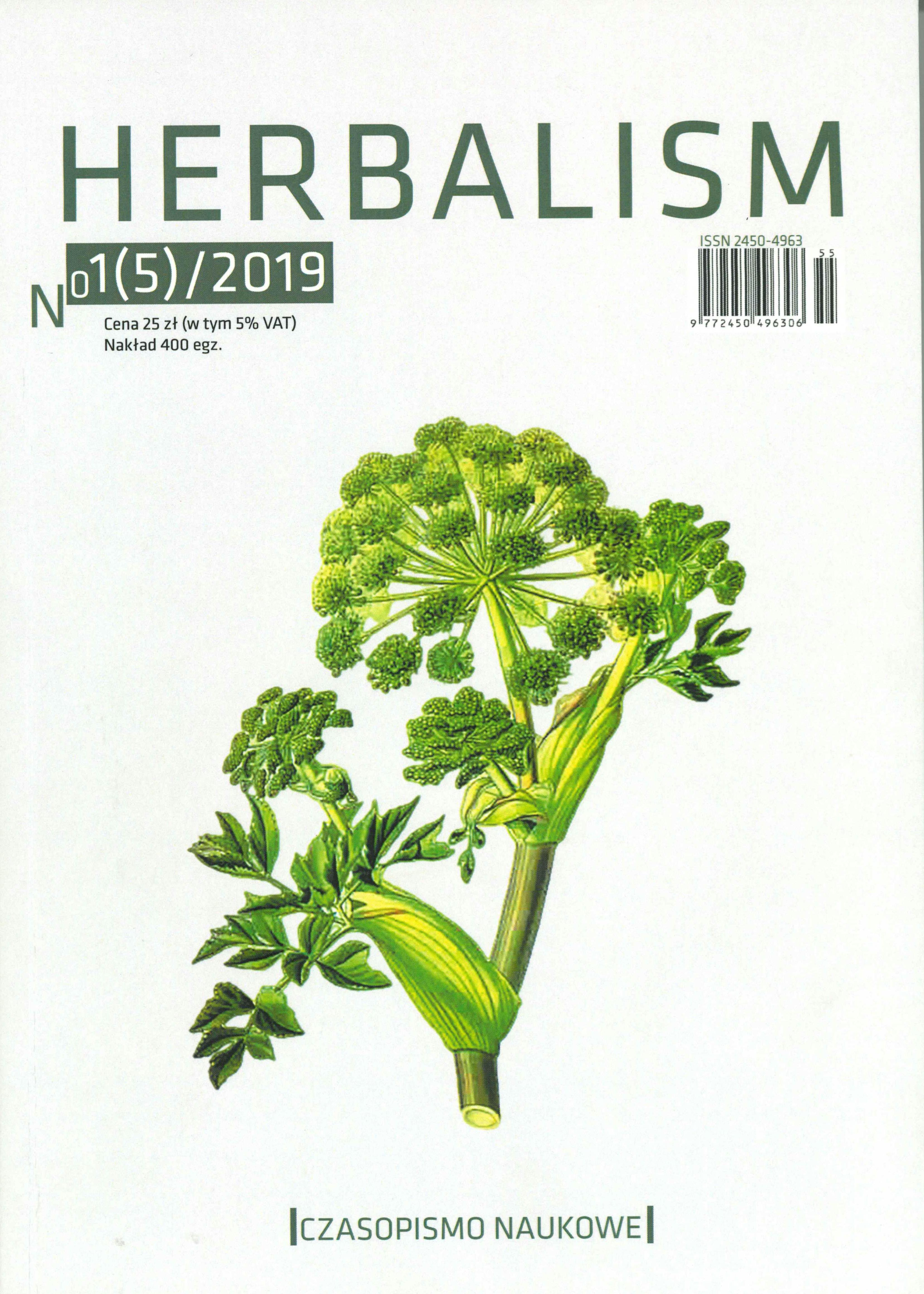Zawartość polifenoli i aktywność przeciwutleniająca ekstraktów z Hyperici herba w zależności od miejsca zbioru
DOI :
https://doi.org/10.12775/HERB.2019.001Résumé
Dziurawiec zwyczajny (Hypericum perforatum, Hypericaceae – dziurawcowate), znany też jako ziele św. Jana (St. John’s Wort), jest rośliną ruderalną powszechnie występującą w Europie, Azji, Ameryce Północnej, Australii oraz w północnej części Afryki, na suchych, słonecznych łąkach, polach i w widnych lasach. W Polsce jest pospolity na całym obszarze. Głównymi składnikami rośliny są awonoidy (ruto-zyd, kwercytyna, izokwercytyna), naodiantrony (hiperycyna, pseudohiperycyna), pochodne uoroglucynowe (hiperforyna). Dziurawiec jest rośliną leczniczą znaną od starożytności, szeroko stosowaną dzięki swoim właściwościom biologicznym. Obecnie w leczeniu chorób żołądkowo-jelitowych używane są napary wodne, natomiast ekstrakty etanolowe zawierające hiperycynę i hiperforynę mają wpływ na ośrodkowy układ nerwowy (OUN) i działają wspomagająco w leczeniu umiar-kowanych stanów depresji. Już za czasów Paracelsusa (1493–1541) stosowano ziele dziurawca w schorzeniach neurologicznych i psychicznych, jak neuralgia, niepokój, a także depresja. Obecnie roślina ta, po latach zapomnienia, wraca do łask i odzyskuje utraconą pozycję jako cenny środek leczniczy. Celem podjętych badań było oznaczenie prolu związków aktywnych i porównanie składu ziela Hyperici herba w zależności od miejsca zbioru. Przeprowadzona analiza surowca zebranego z dwóch stanowisk naturalnych nie wykazała, że miejsce zbioru ma znaczący wpływ na prol związków aktywnych.
Téléchargements
The publisher's shop:
Publié-e
Comment citer
Numéro
Rubrique
Licence

Cette œuvre est sous licence Creative Commons Attribution - Pas de Modification 4.0 International.
Stats
Number of views and downloads: 855
Number of citations: 0



